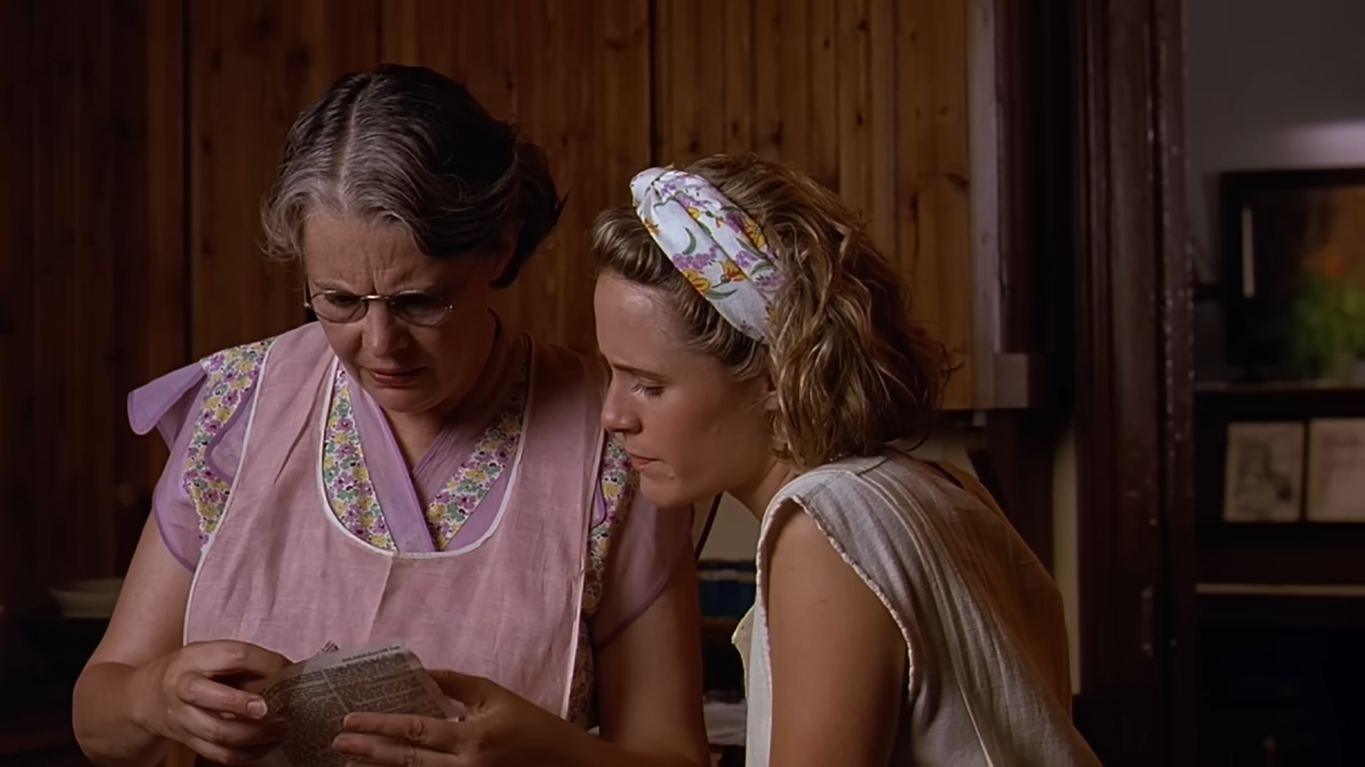
While Fried Green Tomatoes centers on the adult relationships of Ruth, Idgie, Evelyn, and Ninny, the presence of children in the story—though subtle—is deeply symbolic. They appear not as passive background characters, but as mirrors of innocence, trauma, and transformation, often showing more emotional clarity than the adults around them.
Buddy Threadgoode Jr.: The Boy Who Changed Everything
Arguably the most important child character in the film is Buddy Threadgoode Jr., the young boy who dies tragically after being hit by a train. His sudden death is not just a devastating moment — it alters the course of Idgie’s entire life.
-
Before Buddy’s death, Idgie is joyful, carefree, and full of light.
-
After, she withdraws from everyone, especially the family and community.
Buddy Jr. is not just a character — he is the embodiment of lost innocence, a symbol of how one moment can fracture a family, and the emotional wound that lingers for decades.
His death also introduces the motif of trains, which recur as both literal danger and metaphorical movement through time.
Stump (Buddy Jr. II): The Child Who Heals
Later in the film, Ruth gives birth to a son — named Buddy Jr., lovingly called “Stump” after he loses his arm in an accident. This child becomes a kind of emotional redemption for both Ruth and Idgie.
-
For Ruth, he represents the legacy of love she fought for.
-
For Idgie, he becomes a second chance to love someone like family again.
Stump is not pitied for his disability — in fact, the film portrays him as brave, funny, and clever. His resilience echoes the strength of the women who raise him, especially in a world that constantly underestimates them.
His scenes add lightness and hope, balancing the film’s darker themes. But more than that, Stump is proof that life goes on, even after heartbreak.
Children as a Silent Chorus

Besides these named children, the film subtly weaves in background images of kids — playing at the café, riding bikes, peeking through windows. These silent observers represent:
-
The future watching the present.
-
Innocence trying to understand a complicated adult world.
-
A reminder that every story told today shapes how the next generation will see things.
In one quiet moment, we see children watching Idgie’s bee trick with awe. In another, they listen to adult gossip, their eyes wide. These moments underline the idea that children are always listening, always learning — even when adults don’t realize.
Children and the Moral Compass of the Film
In a story filled with complex adult themes — racism, domestic abuse, murder, and secrecy — the presence of children offers a moral clarity. They see things for what they are. They don’t have the words yet, but they feel truth instinctively.
-
When Stump loses his arm, he doesn’t dwell on what’s lost — he adapts.
-
When he sees the love between Idgie and Ruth, it’s normal to him. It’s family.
Children in the film are never used for cheap sentimentality. Instead, they’re vessels of truth in a world full of adult denial and repression.
The Quiet Power of the Young
Fried Green Tomatoes isn’t just a story about grown women changing their lives — it’s also about how children experience those changes, often with more honesty than the adults themselves. Through characters like Buddy Jr. and Stump, the film reminds us that even the smallest voices can carry the weight of memory, healing, and legacy.
In their eyes, we see what’s truly at stake. And in their laughter and sorrow, we find the most timeless truths of all.
